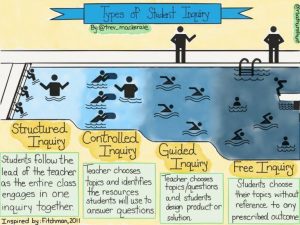Today we had the opportunity to have Heidi a grade 7 teacher at a local school in Victoria. With the evolution of technology and apps like Minecraft, teachers are able to create lessons that are co-curricular. As such, interrelating and create lessons that work with various subjects is powerful to engage our students. In the following lesson plan https://education.minecraft.net/lessons/fairytale/ they focus on grade 3-5 and use language arts and digital technology. This allows students to be creative and engaged while collaborating and building (math) in relation to a story (literacy).
Here are a few pro’s and cons
Pros
- Easy access
- Inspiring and engage
- Promotes creativity
- Promotes teamwork, collaboration and community
- Connects to various subjects notably math
- Helps support problem solving and geometry
- Teaches resource management
Cons
- Addicting
- Parents may not approve
- Distracting
- Too much screen time
- Not super easy/ user friendly
Another key program we learned was Google Science Journal. This program allows children to measure light, sound, motion, & atmospheric pressure. As such, it can be useful in many subject areas (music, science, math etc). For elementary it may not be very practical as all students need a phone or tablet that have these features. However it could be very useful for middle and high school. The following link explains how Google Science Journal is useful for Science Fair projects. https://paksc.org/pk/articles/google-science-journal-app-an-excellent-tool-for-science-fair-project-research/
Another key feature is that there is a feature that allows this program to film. Therefore, this is beneficial as there is an ability to record and save your data. Online there are lots of different resources that help empower students to learn using this program.
Here are just some pro’s and cons.
Pros
- Useful for many subject areas (music, science, math etc)
- Free
- Has many resources and tools
- Measures light, sound, motion and atmospheric pressure
- Fast and the program does the work for you
Cons
- Not accessible to everyone as not everyone has a phone/table
- Too much screen time
- distracting
- Not easy for those who aren’t great with technology




Recent Comments